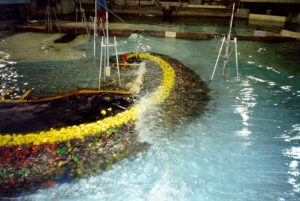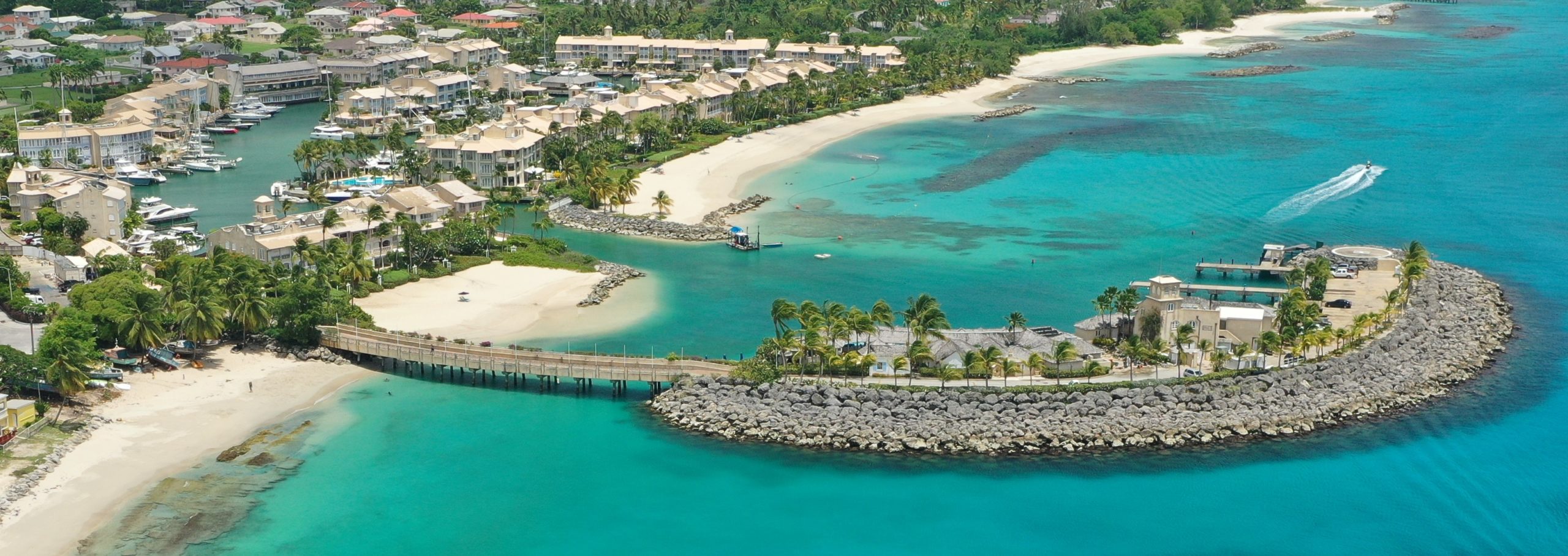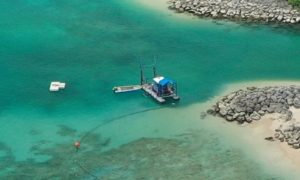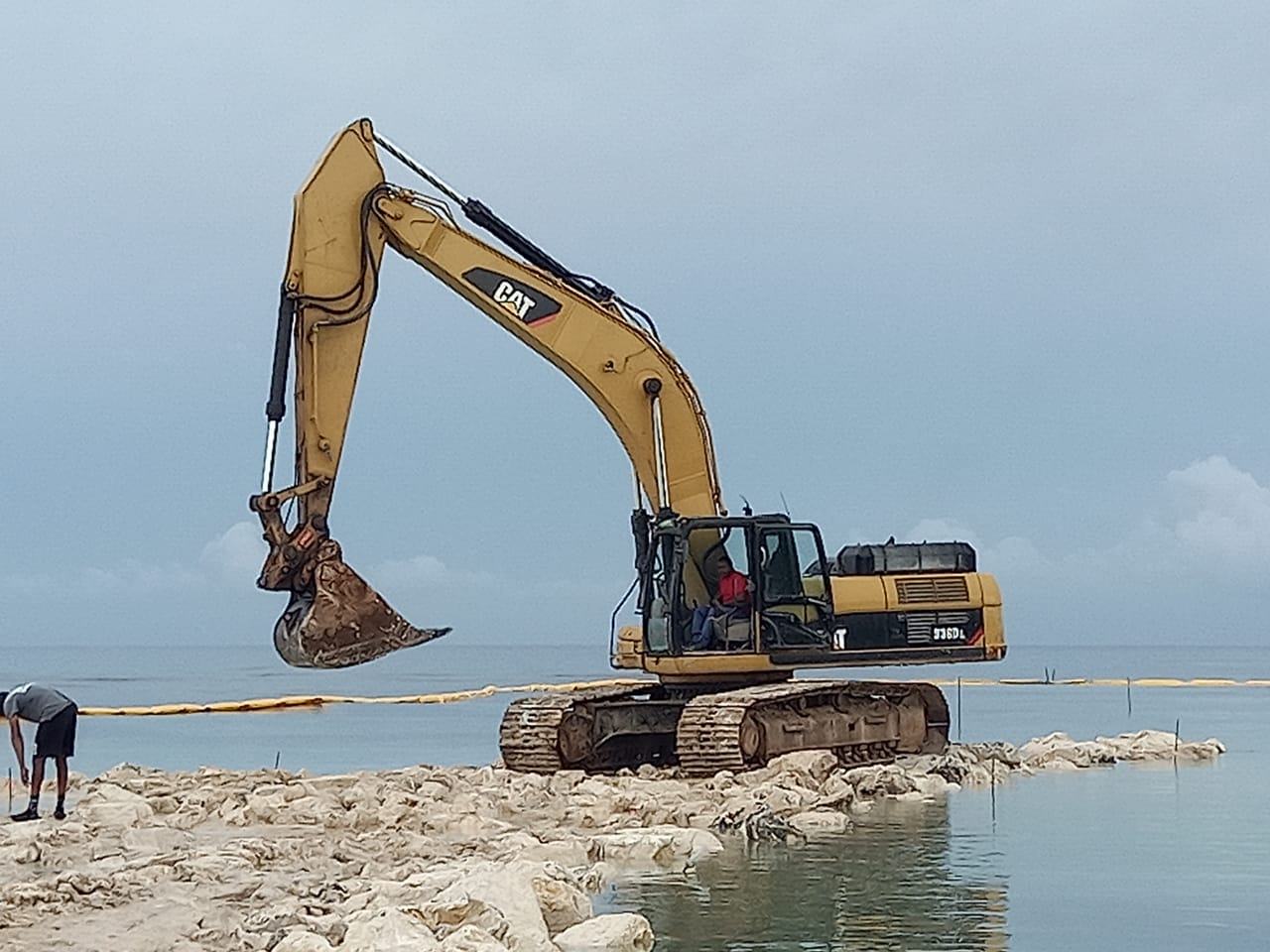As Sir Charles Williams and his partners set out in the early 1990’s to develop a parcel of land on the west coast of Barbados into the first luxury residential marina on the island, nature placed an obstacle that threatened to derail their plans. On this pristine stretch of coastline, beach sediments flow predominantly from north to south. The project, to be named Port St. Charles, centered on an offshore breakwater that would ensure a calm channel for the marina and protect several yacht berths. The problem: the stone breakwater would block the natural flow of sand to the adjacent beaches to the south.
Going with the flow
 Dr. David Smith and Philip Warner, young coastal engineers working on the project, would not be deterred. They worked with the coastal zone regulators at the Government of Barbados and set out to develop a strategy that would allow the longshore sediment flow to continue, protect the area’s reef ecosystem, and maintain both the resort’s beach and that of the neighbours. They conducted extensive environmental surveys, and engineering studies and built one of the first 3-D physical models for a Caribbean development. The model allowed regulators to see firsthand how the armoured breakwater would remain stable against hurricane wave action.
Dr. David Smith and Philip Warner, young coastal engineers working on the project, would not be deterred. They worked with the coastal zone regulators at the Government of Barbados and set out to develop a strategy that would allow the longshore sediment flow to continue, protect the area’s reef ecosystem, and maintain both the resort’s beach and that of the neighbours. They conducted extensive environmental surveys, and engineering studies and built one of the first 3-D physical models for a Caribbean development. The model allowed regulators to see firsthand how the armoured breakwater would remain stable against hurricane wave action.
Beaches are dynamic
For those who don’t know much about coastal processes or the climate on the west coast of Barbados, a brief primer: Beaches are very reactive. They often lose sand during the winter months when the wave action is more harsh. During the summer season, nature softly nudges sand back onto the beach. Wind acts to move the sand around, and grasses provide a natural receptacle to keep sand in place. This stretch of coast in Barbados has quintessential turquoise water, calm in the summer. But when North Atlantic swells move in, the waves can become big enough to give surfers a thrill.

Building bridges
A breakwater was key to the project’s viability. The coral reef provided stability and structure, reducing the need for excessive armour in the way of stone. Smith and Warner’s solution was to build a bridge out to a breakwater formed around the reef and create a sand trap to collect the sand as it flowed south along the shoreline.

Part of the solution involved the developer buying a small dredge and setting up what’s called a “sand-bypass” system. The sediment would be allowed to accumulate in the sand trap, and every few months (as dictated by nature), the operators would dredge the sand from the trap and then, using the machine’s pump and hose, place it on the beach to the south. The cost was factored into the marina’s berthing fees and common maintenance charges for the resort.
Long term stability
Twenty-five years later, those same environmental safeguards remain in place. The coastline is healthy, and maintaining the beautiful sandy beach has proven to be routine and affordable. The success of the project and the foresight that coastal property owners throughout the Caribbean would need to face a rapidly changing climate and rising seas prompted Smith and Warner to set up shop. Now, 25 years later, Smith Warner International has become the largest coastal engineering and coastal zone management firm in the Caribbean with a team of over 30 professionals who understand the region’s coastlines like only longtime locals can.


